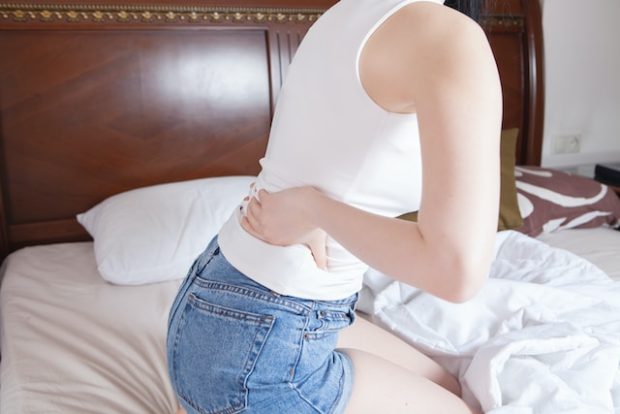Lower back pain is a common ailment that affects millions of people worldwide. While there may be several causes, one of the primary culprits is our sedentary lifestyle. Sitting for long hours at work and during leisure time can put excessive stress on the lower back muscles, leading to pain and discomfort. In this blog post, we will explore some tips and techniques that can help you alleviate lower back pain caused by prolonged sitting.
Maintain Good Posture
The first step towards relieving lower back pain caused by sitting is to maintain good posture. A good posture keeps the spine aligned correctly, reducing pressure on the lower back muscles. When sitting, keep your feet flat on the ground and your knees bent at a right angle. Use an ergonomic chair that provides adequate support for your lumbar spine, or insert a lumbar roll cushion behind your lower back arch. All of these will help reduce lower back pain constipation in individuals.
Sit with Your Feet Elevated
Elevating your feet while sitting can also help reduce pressure on the lower back muscles. You can use a footrest or even stack some books under your feet to achieve this position comfortably.
Take Frequent Breaks
Sitting for extended periods without getting up and moving around puts undue stress on our bodies – especially our backs. Taking frequent breaks throughout the day allows us to stretch out tight muscles. This helps relieve muscle tension and promote blood flow through concerned areas assisting injury repair processes in vital discs that are responsible for carrying spinal loads.
Stretching Exercises
Stretching exercises provide significant relief from lower back pain when done appropriately and regularly! Incorporate these stretches into your daily routine:
Hamstring stretch – Sit at the edge of a chair with both legs extended straight out in front of you, touching the floor. Lean forward from your hips while keeping your spine straight until the stretch is felt in the back of your thighs.
Hip flexor stretch – Stand with your right leg forward (knee bent) and bend your left leg back. Tuck your pelvis under whilst tightening your glutes and shift your weight forward until the stretch is felt in the left hip flexor region.
Back Extension – Place your hands on your lower back while seated. Arch backward gently to feel a stretch at the front side of your stomach muscles that attach to your spine.
Drink More Water
Water is essential for maintaining proper hydration levels in our bodies, promoting cell growth, and preventing dehydration, headaches, and muscle tension due to electrolyte imbalance. This reduction of fluid within condensed discs can lead to pain symptoms, so drink plenty of water!
Use Ice or Heat Therapy
Periods of respite from work provide an opportune window to incorporate ice or heat therapy for addressing discomfort. When back pain becomes particularly challenging, this time can be utilized to apply ice to sore areas consistently throughout the day. Employ an ice pack (a cloth-wrapped bag of frozen peas, for instance) and place it over the affected region. Maintain its application for durations of 10 to 20 minutes, adjusting rest intervals in accordance with individual responses.
Alternatively, heat therapy involving heat packs or specialized pillows can be positioned on the afflicted area. This approach enhances blood circulation, aiding the healing process by delivering essential nutrients that specialized cells require, such as oxygen. Additionally, heat therapy stimulates the release of hormones involved in reducing inflammation. This method proves especially beneficial once the initial inflammation subsides following an injury or an episode of overworked muscles.
In Brief
Prolonged periods of sitting that result in lower back pain are a global concern, but they are not insurmountable, albeit occasionally daunting. Sustaining proper posture during work hours, utilizing footrest elevation in certain situations, incorporating regular breaks throughout the day coupled with stretching routines, elevating water intake, and judiciously applying ice or heat treatments as necessary all contribute to expediting recovery processes. These strategies are effective across a spectrum of severity, ranging from mild stiffness to persistent chronic episodes—each individual’s experience varies.
Read More:
Traveling with back pain: 5 tips for a more comfortable trip


